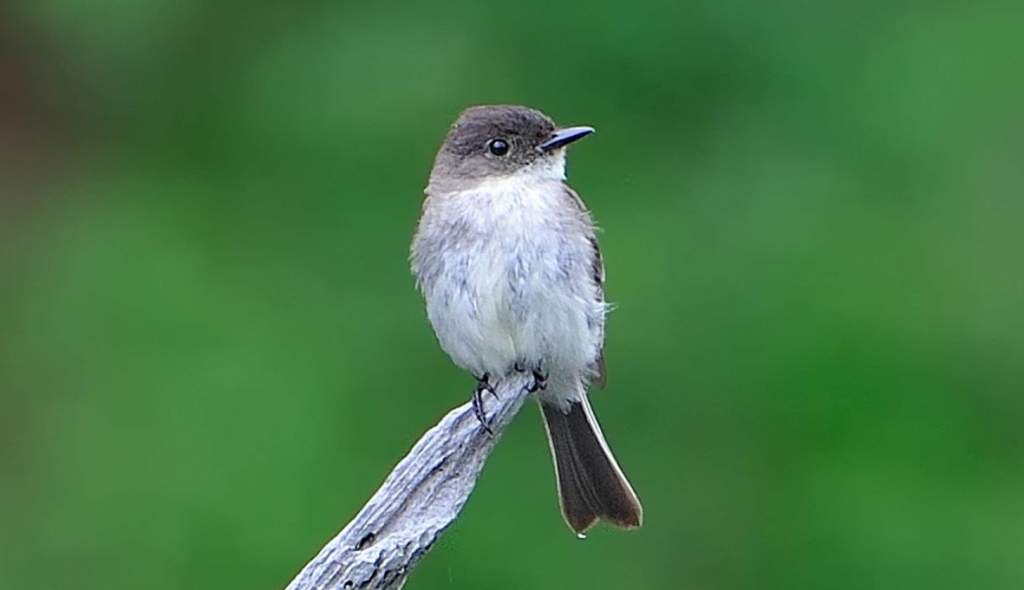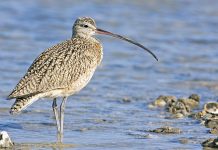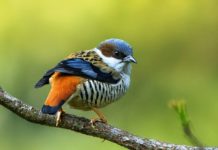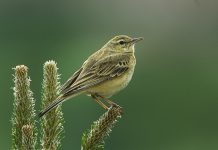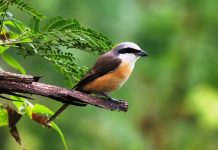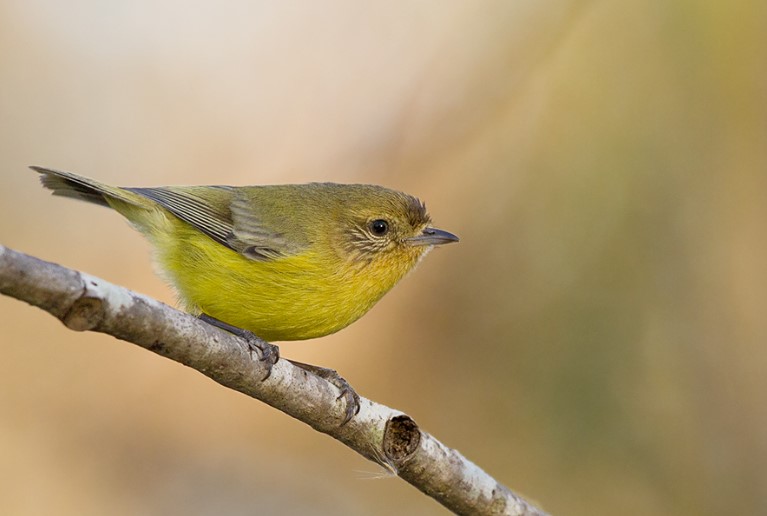The Eastern Phoebe song is a raspy, two-part sound that gives them their name: “fee-bee.” It lasts about half a second. The bird song is also sung with a stutter or two between each syllable. During or after aggressive interactions, eastern phoebes are more likely to make their call.
Furthermore, Eastern Woodpews make brisk whistle-like calls similar to those of Phoebe, the bird named after its song. Because of its repetitive name, it’s pretty easy to recognize and remember. In contrast to the western phoebe, it is more reserved in its movements. Despite its friendliness, it isn’t intrusive.
The bird always respects human personal space. This small passerine bird (Sayornis phoebe) lives in eastern North America. When it puffs up its small crest, this species appears remarkably big-headed. Above, it has gray-brown plumage.
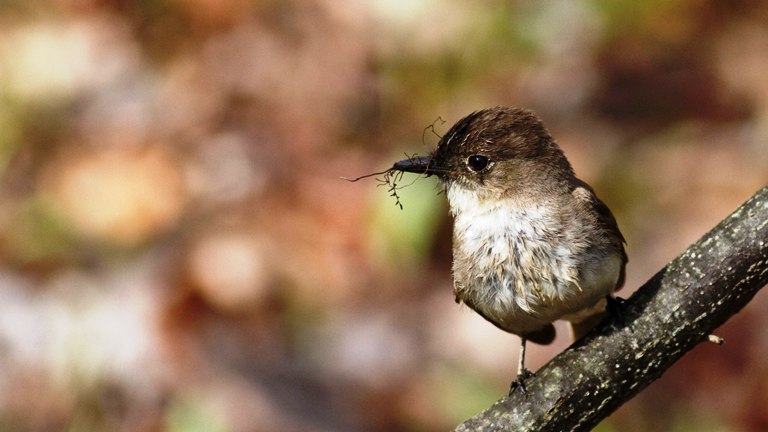
When breeding season begins, the bird will have buffish underparts and a white throat. On each wing, there are two faint buff bars. Unlike other North American tyrant flycatchers, it lacks an eye ring and wing bars, and when perched on a branch, it pumps its tail up and down.
The wing bars of the eastern phoebe are always clearly defined and contrasted since they lack the buff hue usually found on lighter parts of their plumage. The eastern phoebe leaves for winter quarters at about the same time as it appears on the breeding grounds, but it does not bob its tail habitually.
Eastern phoebe nests can take between five and fourteen days to construct and measure 5 inches wide when finished. The size of the nest is normally 2.5 inches in width and 2 inches in depth in the nest cup. In some years, Barn Swallows reuse nests, which is unlike most bird nests. Bridges and buildings are often used as nesting sites.
It is possible to start nesting activities as early as April 1. The Eastern phoebe eggs are laid in a crevice in a rock or man-made site in a cup with a mud base lined with grass and moss. A pair usually raises two broods a year, with both parents feeding the young. Brown-headed cowbirds (Molothrus ater) occasionally parasitize the nest of eastern phoebes.
It is generally found on streamsides and farmland areas, providing ideal habitats for eastern phoebes, which are highly adaptable to urban environments. Eastern phoebes prefer trees, brushy areas, overhangs, and other shady areas over open areas.
During migration in the winter or breeding season, they are frequently seen around wooded edges and brushy areas where water sources are abundant. Although its normal range does not include the southeastern coast of the United States, this tyrant flycatcher breeds in eastern North America.
Often near water, eastern phoebes breed in open woodlands, farmlands, and suburbs. When searching for food items, this phoebe often perches conspicuously. In cooler weather, it also consumes fruits and berries.
